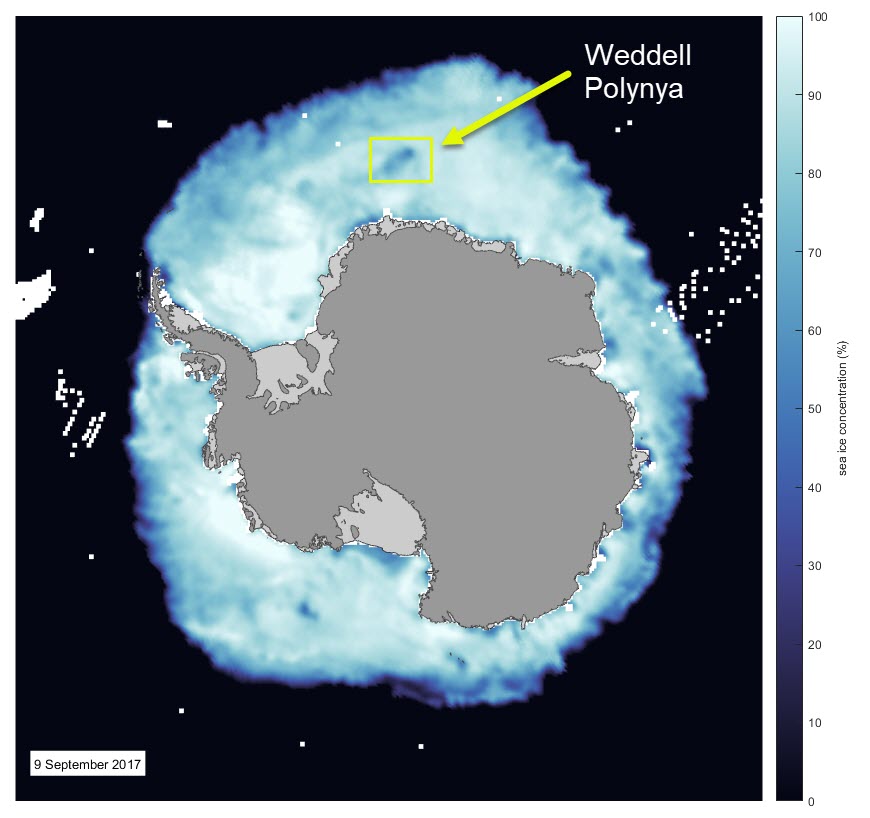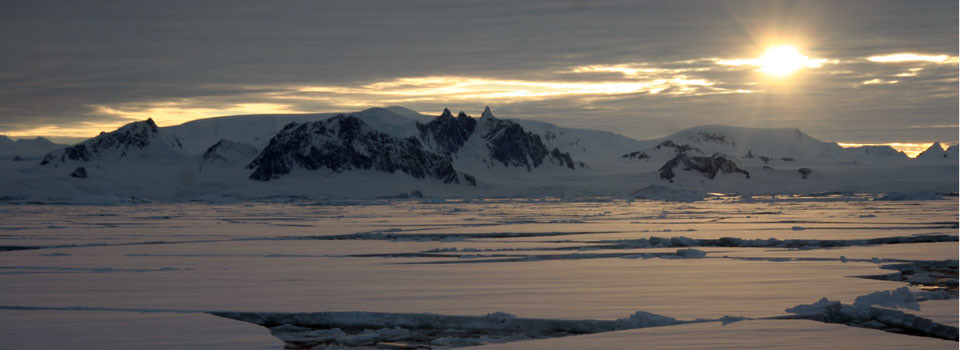The Weddell Sea polynya is an area of open water that sometimes appears in the Weddell Sea over a relatively shallow region called Maud Rise.

In the latest satellite imagery from the DMSP satellite you can see the lower concentration sea ice as the darker blue colour. If you look at the MODIS imagery for the same date you can clear see black which indicates open water in the pack ice.

Enlarging the region you can clearly see about 2,600 km2 of open water - although the low concentration sea ice is over a much wider area.

The Weddell Polynya was first observed when large scale satellite observations of the Antarctic ice pack were made in 1974, 75 and 76. And it actually spawned a whole line of oceanography about how dense waters were formed.

Because that early work was only based on satellite observations and not actual ocean observations much of it turned out to be a dead end. We know now that it is likely the low sea ice concentration is caused by warm eddies being shed from the Maud Rise (Holland, 2001). These eddies bring warm water from lower in the water column close to the surface - which makes the sea ice concentration low, and in some places absent.
The Weddell Polynya did appear last year too.

I wrote about this last year when discussing the 2016-7 record low Antarctic sea ice extent.
And Gordon et al 2007 show a time series of number of days the Maud Rise has a sea ice concentration over it of less than 92%.

The time series shows that the polynya does not appear every year, but in the paper that figure is from, the authors say we could expect to see a Weddell Polynya when the Southern Annular Mode is very negative.
Finally, sea ice extent in the Antarctic is still relatively low: currently ~540,000 km2 below the 1981-2010 median extent.

-
Added 12 Sept:
Just after I published this post Lars Kaleschke posted another image of the polynya on twitter using data from SMOS.

SMOS is the Soil Moisture Ocean Salinity (SMOS) Earth Explorer mission. The link in the tweet is to the University of Hamburg processed data L3B SMOS Brightness Temperatures via their Integrated Climate Data Center.
-
Also a story on Science Daily yesterday about this polynya: How openings in Antarctic sea ice affect worldwide climate
"This small, isolated opening in the sea ice in the Southern Ocean can have significant, large-scale climate implications," said Irina Marinov, a study author and assistant professor in Penn's Department of Earth and Enviromental Science in the School of Arts & Sciences.
Thanks Nicolas Fauchereau for tweeting the story to me.
